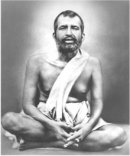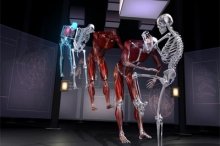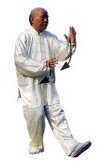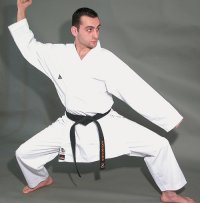A good martial arts instructor is hard to find. But if you aren’t too picky, you can save literally hours of time by picking a bad instructor instead. This simple four-step plan will keep you on the wrong track!
Why Write About Martial Arts?
 After dedicating most of my day to work and family obligations, I am lucky to find a spare hour or two for my martial arts hobby. Many of you have a similar problem, no doubt.
After dedicating most of my day to work and family obligations, I am lucky to find a spare hour or two for my martial arts hobby. Many of you have a similar problem, no doubt.
 We could practice an hour per day for our entire lives, without exhausting the breadth and depth of martial arts. Considering the scope and challenge of the task, can we really afford to spend our precious time blogging about practice, at the expense of time spent in practice?
We could practice an hour per day for our entire lives, without exhausting the breadth and depth of martial arts. Considering the scope and challenge of the task, can we really afford to spend our precious time blogging about practice, at the expense of time spent in practice?
Increase Your Stability by 50% With This Simple Adjustment
Stability is a critical component of martial application. Without stability, your ability to apply force, or withstand an opponent’s force, is severely compromised.
Stability is a function of strength and balance. And the easiest way to improve your balance is to adjust your posture.
I learned this postural adjustment tip from a Russian martial artist in Portland. I like it because it is simple, effective, and requires very little skill to implement. If you are a student of Chinese or Japanese martial arts, there’s a good chance you’ve never heard this tip before.
Karate Fall Fashion Tip
Miyamoto Musashi’s Personal Development Tips
Few of us can match Miyamoto Musashi’s single-minded devotion to the pursuit of excellence in martial arts.
In fighting over sixty duels, many to the death, Musashi demonstrated great courage. And in winning every one, he showed superior skill and technique. Musashi attributed his outstanding swordsmanship to unrelenting practice of self-reliance and self-discipline.
In his final years, Musashi retired to a cave for a life of quiet contemplation. It was during this time that he composed his famous guide on strategy, The Book of Five Rings.
In his very last days, this Kensei (Saint of Swords) further distilled his insights on self-discipline and personal development into 21 points.
Monk Gloats Over Yoga Championship
‘I am the serenest!’ he says
LHASA, TIBET—Employing the brash style that first brought him to prominence, Sri Dhananjai Bikram won the fifth annual International Yogi Competition yesterday with a world-record point total of 873.6.

“I am the serenest!” Bikram shouted to the estimated crowd of 20,000 yoga fans, vigorously pumping his fists. “No one is serener than Sri Dhananjai Bikram—I am the greatest monk of all time!”
Esoteric Fight Science

In the new martial arts documentary Fight Science, computerized sensors are used to objectively measure the speed, power and balance of various martial artists.
Among the findings:
- The boxer punches with 1000 pounds of force;
- The wushu practitioner moves faster than a snake;
- Damage from a Muay Thai knee is comparable to a 35MPH car crash.
These data points illustrate that martial arts practice results in a stronger, faster body. However in my opinion, they capture neither the most significant benefits of practice, nor the most interesting esoteric skills.
Increase Your Power by Improving Your Balance
Victory in combat does not always belong to the strongest contender. As demonstrated repeatedly throughout history, the weaker fighter can prevail, if they attack efficiently and deny their opponent the opportunity to strike back.
What can you do to increase the efficiency of your attack and defense, and overcome the odds?
A Brief Comparison of Wu Hao Tai Chi and Wing Chun
My first exposure to the Wu (Hao) style of Tai Chi occurred at the Taiji Forum 2006 conference in Thunder Bay, Ontario. I noticed a few significant differences between its postures and those of the more popular Yang style:

- The stance is shorter and more upright.
- Arm and leg movements are smaller.
- Hands remain in front of the body.
- Both feet rotate simultaneously when turning.
- Movements in the form are repeated to left and right sides.
Wu (Hao) style was developed in the 1800s by Wu Yuxiang, with inspiration from Chen and Yang predecessors. However, based on my limited exposure, it seems equally similar to some schools of Wing Chun. Other conference attendees made similar observations.
Does “Final Fu” Give Martial Arts a Black Eye?
A Fight to Become the Top Dog
Final Fu, a martial-arts themed reality show, made its debut in July. According to the producers’ description:
Final Fu is an unprecedented series that will pit the best practitioners of their respective styles against one another in an arduous competition of challenges and stand-up, tournament point fighting to determine which art is capable of producing the definitive martial arts champion.
Does this show deliver on its promise? Is it informative or entertaining? Will Final Fu have a positive or a negative impact on the public perception of martial arts?
